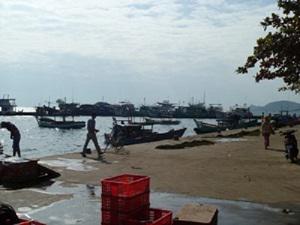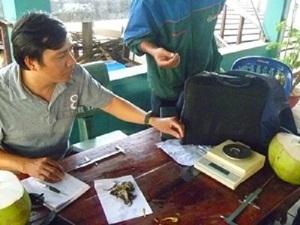Ut Vu Ngoc
Other projects
6 Sep 2007
Assessment of Shellfish Biodiversity in the Mangrove Ecosystem Impacted by Shrimp Intensive Culture in the Mekong Delta, Vietnam
The project aims to investigate the fishing status of seahorse resources to provide database for establishing a long-term monitoring program on conservation of the resources in Phu Quoc Island.

Seahorse populations have been seriously threatened and realized as “vulnerable” resources due to overexploitation. According to IUCN (2006), seven species of seahorse were on the 2006 IUCN Red List of Threatened Species, including at least four species found in Vietnamese waters. It is reported that at least 20 million seahorses are traded worldwide each year for traditional medicines, curiosities, and aquarium fishes (Vincent, 1996).

Vietnam is among the top five seahorse-exporting nations in the world with an estimated number of 6.5 t or about 2.2 million seahorses each year exporting primarily to China. Kien Giang province where Phu Quoc Archipelago located is one of the major areas trading seahorse to China (Giles et al., 2005; Meeuwig et al., 2006). Increasing demand for export has been triggering overexploitation pressure of seahorses in this island.
In Phu Quoc, seahorses are being fished by several ways in which trawl net is extensively used and one of the most destructive methods. All sizes of seahorse are taken either as targeted species or incidental bycatch. However, there hasn’t been any data or information revealing the current status of this resource including fishing levels, production or its vulnerability to exhaustion or extinction as yet at this island. Investigation on the status of the seahorse resource is very imperative to provide database for generating a strategic plan for monitoring and protecting this valuable resource.
The research will focus on the:
(i) diversity of seahorses in which number of seahorse species existing in the area will be identified and importantly the most vulnerable species will be addressed.
(ii) current fishing levels including fishing gears, fishing efforts, total landings.
(iii) specific habitats of different seahorse species.
(iv) peaks of maturation periods and spawning seasons.
(v) recruitment potential.
(vi) the awareness of resource conservation among the community.
The outcomes would be used as database to depict a detailed picture of the seahorse resource in this archipelago and formulate a long-term monitoring program to control, protect and conserve this valuable but vulnerable resource. This can contribute to the conservation of the marine biodiversity in Phu Quoc archipelago which is considered one of the highest biological diversity areas in Vietnam.